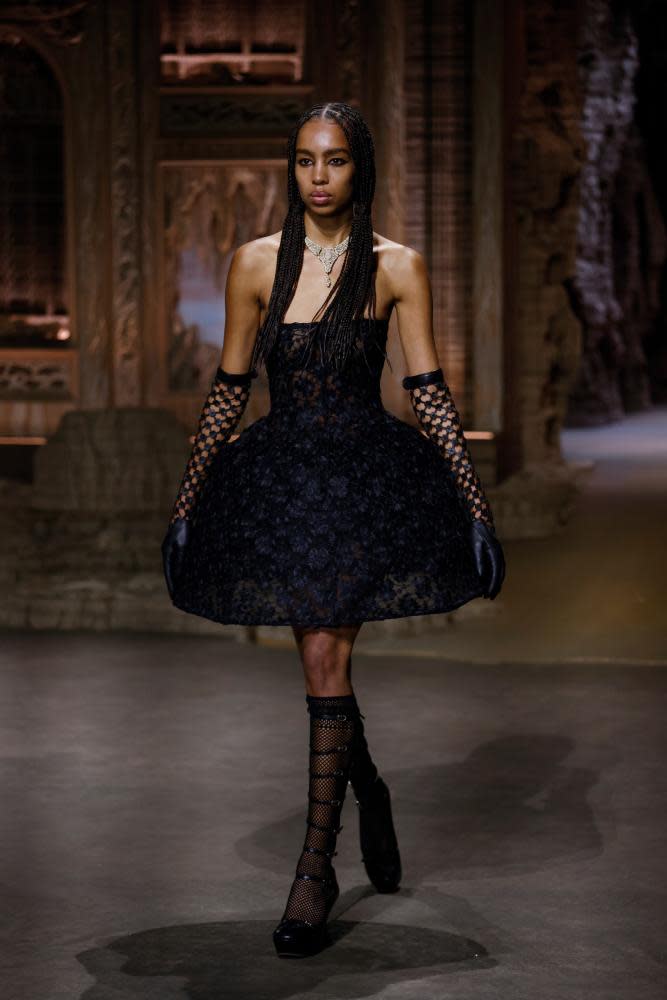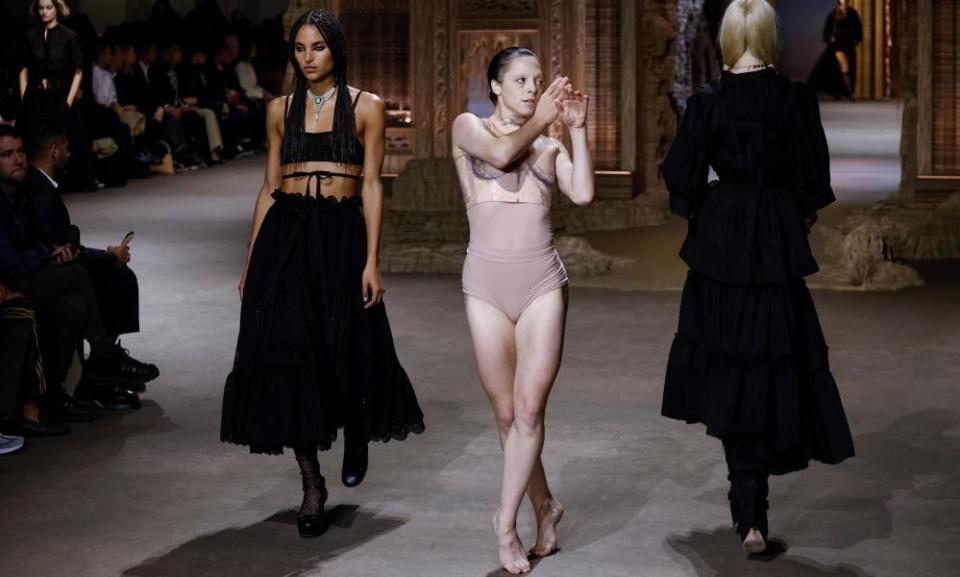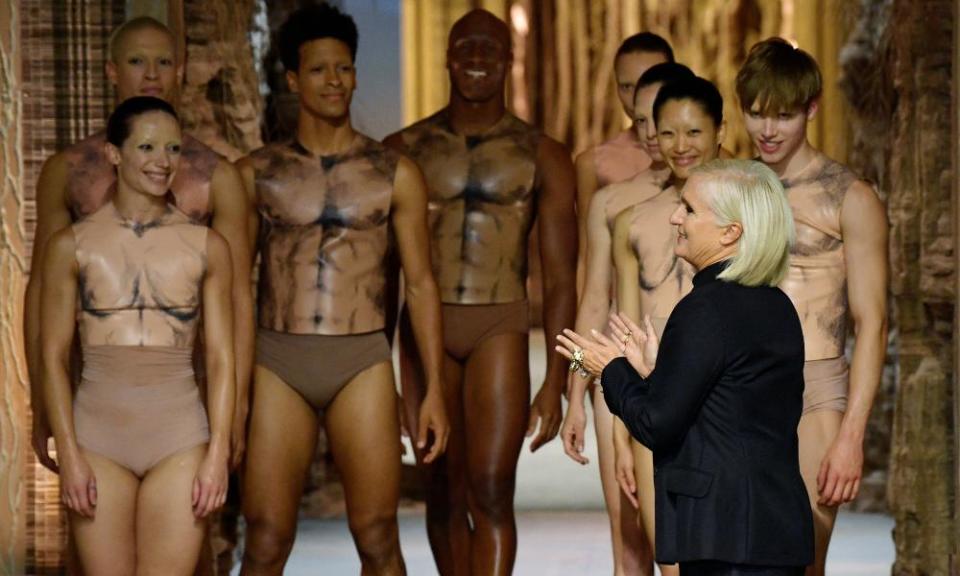Crinolines and baroque heels: Dior designer taps into 16th-century muse for Paris show
“Many young people hate fashion,” said the Dior designer Maria Grazia Chiuri, backstage before her grand show in the Tuileries garden that has opened Paris fashion week.
“They hate fashion because to them, brands are part of an establishment system which represents power,” she added, in an eye-catchingly frank insider assessment of fashion’s problematic status. Such candour is rare, from titans of an industry where keeping up appearances is everything. But Chiuri’s strategy for increasing Dior’s relevance has been to engage with issues – from cultural appropriation, to the responsibility owed by fashion’s profit-makers to a global workforce of garment workers – to which fashion week mostly prefers to turn a blind eye.

Crinolines and hooped skirts, high boots with baroque-curved heels, rich layers of lace fastened with satin ribbons and long, delicate gloves made up a catwalk homage to Dior’s muse of the season, Catherine de’ Medici. “She was a woman who really understood the power of fashion to impress her power upon everyone around her,” said Chiuri. “She was about fashion as a demonstration of power. This is very interesting to me, because I am from a generation for whom fashion is about how to be free,” added the designer, who is 58.
“But the history of fashion is very close to the history of power. And now, when I go into fashion schools, because I am from a big brand I find that some of the young generation hate what that represents, because they associate the fashion system with power.”
De Medici was an early adopter of high-heeled shoes, and of the corset. The story of this Italian noblewoman who rose to power in the French court of the 16th century after the death of her husband captured Chiuri’s imagination for how it speaks to “fear and anxiety around women in positions of power. After her husband died, she dressed all in black partly because it made her visible in a crowd – black clothes were expensive, so few people could afford to dress all in black.”
Chiuri’s interrogation of the mechanisms of power included a sideways look at how Dior itself has played the system to its advantage. In the Dior archives, the designer found a map of Paris which centred the city around the Avenue Montaigne headquarters of the fashion house. The map became a print for a trench coat. Both the Dior label and the visual iconography of the city of Paris have become symbols of chic – with brands such as Dior deliberately blurring the boundaries between the two.

In 2017, Chiuri opened a catwalk show with a model wearing jeans with a Breton-striped slogan T-shirt spelling out the question first asked by the American art historian Linda Nochlin in 1971: “Why have there been no great women artists?”
She has been attempting to answer her own question ever since, collaborating with a female artist for each Dior show so that the catwalk celebrates female creativity as well as handbags. This season was a second collaboration with Eva Jospin, a sculptor who works in cardboard, who created an intricate grotto as a centrepiece of the catwalk space. “I am interested in the grotto as a way of representing beauty and nature, but with a slight strangeness” said Jospin at the event.

Five years ago, Dior was a worldwide household name worldwide, but lacked the sales to match. The house, founded by Christian Dior in 1947, led fashion from the front in the post-war years, redrawing the template for chic with the famous, full-skirted ”new look”. But while the prestige of the name endured, by the 21st century this was no longer fully reflected in sales. But since 2017, when LVMH embarked on a rapid acceleration of e-commerce and a series of spectacular fashion shows, annual revenue has tripled, from €2.2bn (£2bn) to €6.6bn. Dior is now closing the gap on its historic rival for the top spot in Paris fashion, the house of Chanel.

 Yahoo Movies
Yahoo Movies 
